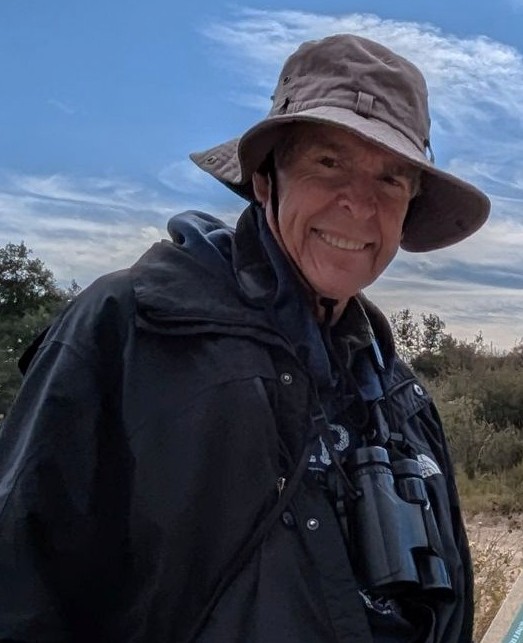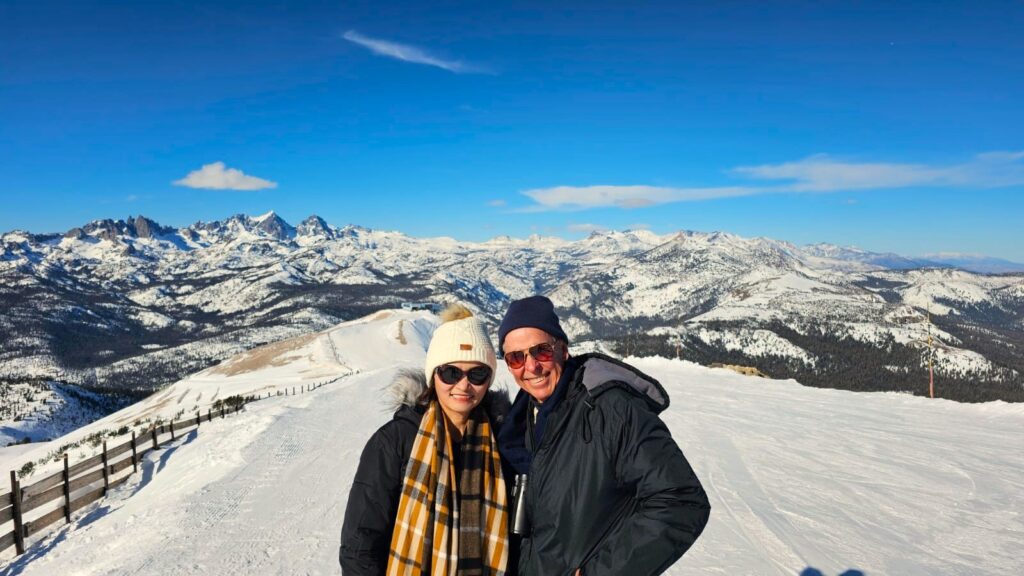
The Visiting Naturalist
Leiothrichid.com
© Callyn Yorke
Welcome to my website, The Visiting Naturalist. These pages chronicle my bird surveys, travelogues, memoirs, editorials, photography and artwork (see top menu bar). Unless otherwise noted, all writings, digital images and artwork, represent original items produced by the author. This website is entirely free from MSG, DDT, FSD and Chat GPT.
I have recently retired from teaching biology at Antelope Valley College, Lancaster, California (1984-2020) and UCLA Extension, Los Angeles, California (2014-2023). Luckily, I am enjoying good health in my senior citizen years, and continue to pursue ornithological and related interests.
People sometimes ask me if there were difficult adjustments to make during retirement. There was none, really. Transitioning from habits formed by an institutional agenda and regular teaching schedule was easy; I simply maintained forward momentum. In fact, retirement provided more opportunities for creativity and scientific inquiry than I had experienced since my Peace Corps days at Universiti Kebangsaan Malaysia (UKM) and subsequently, the zoology doctoral program at the University of Arkansas, Fayetteville.
My academic training in zoology and ecology began in the early 1970’s with classes in the Department of Biological Sciences at California State University Hayward (CSUH – renamed Calif. State University East Bay). I studied under the guidance of the late Professor Howard L. Cogswell, a preeminent California ornithologist. A wetland ecological preserve in the San Francisco Bay, Cogswell Marsh, was named in his honor.
Following military service in the Pacific during WW II, Howard Cogswell completed his undergraduate studies and entered the Ph.D. program at UC Berkeley, under Dr. Frank Pitelka, who was, among other notable zoology students, e.g. F. Starker Leopold, Charles G. Sibley and Richard C. Banks, a descendant of the Joseph Grinnell – Alden H. Miller lineage of pioneering zoologists associated with the Museum of Vertebrate Zoology at UC Berkeley.
As an undergraduate at CSUH, I was only vaguely aware of the depth of that extraordinary academic pedigree. Years later I learned that the lessons Professor Cogswell had taught us, e.g. the importance of keeping field notes with accurate documentation of one’s observations, were essentially the same lessons presented to prominent scientists before me.
After successful completion of a Master’s Degree in Biological Sciences at CSUH, I enlisted as a Peace Corps Volunteer, assigned to the Zoology Department of the National University of Malaysia in Kuala Lumpur (UKM,1977-80). During that time, in addition to visiting neighboring countries during university breaks, I began correspondence with Professor Douglas A. James of the University of Arkansas, Fayetteville. Dr. James showed a keen interest in my Malaysia fieldwork, specifically regarding bird surveys in an old rubber-tree plantation on the outskirts of Kuala Lumpur. His letters encouraged me to continue collecting quantitative data that could be used for a doctoral dissertation at the University of Arkansas.
Indeed, the late Dr. James’ helpful suggestions on how to collect behavioral and ecological data related to my bird surveys, eventually came together in a Ph.D. dissertation I completed while in the Zoology Department at the University of Arkansas (1980-83). Although initially it seemed redundant to me, I was required to take a series of undergraduate and graduate ecology courses at UA, which provided additional methodological training for the collection of field data. Notably, for the second time in my academic journey, as for Dr. James and his distinguished mentor, S. Charles Kendeigh, of the University of Illinois, Urbana, I was privileged to be a student in a fine scholarly lineage of American ecologists.
In retrospect, I have never grown out of a childhood fascination with nature. Since my boyhood days on a 500-acre ranch in Morgan Hill, California, I still can’t resist turning over an old log, chasing a lizard or capturing a snake. And when I was given my first binocular in high school, then joining a neighboring birder for an outing, I began to visualize my calling in life. Those visions materialized at CSUH when I observed that my distinguished biology professors had been hired to do the outdoor stuff I had always thought was great fun.
Nowadays, I’ve come full circle with retirement from a lengthy academic career. Distant indeed are the times when relatives often asked, “Cal, when will you get a real job?” Actually, I’m unsure if I ever really had a job in the sense that they were referring to. Nevertheless, I refused to give up on academia, took odd jobs to get through college, lived for years straddling the national poverty line, survived three divorces, and somehow came out of all that still breathing on my own.
Within the pages of this website, are the relatively recent accounts of my travels and results of fieldwork in Southeast Asia where I have a modest second home, e.g. BIRD SURVEYS OF VIETNAM (2017 —). When at my primary residence in Southern California, I’m kept busy with a bird population and behavioral ecology study at Lake Palmdale, CA, (1986 –).
In my spare time, i.e. rainy days in Đà Lạt, Việt Nam, I enjoy dabbling in artwork — mostly pencil and watercolors. Alas, after perusing the exquisite drawings and thoughtful natural history prose of authors such as, Amy Tan and Helen MacDonald, I am going to need another lifetime of schooling to see much progress in those subjects.
*Please note: Webpage entries published prior to 2019 (avconline) are being transferred to Leiothrichid.com, a process that will take some time to complete.
